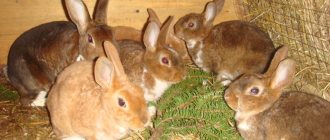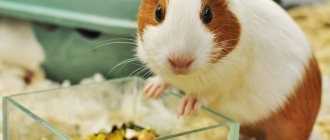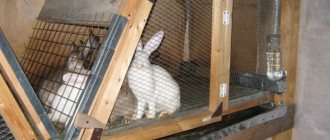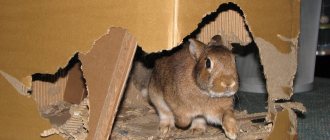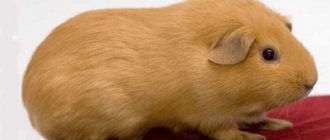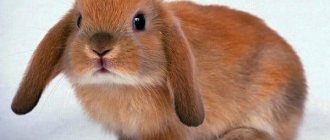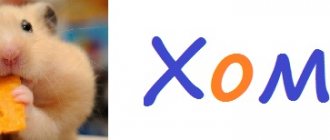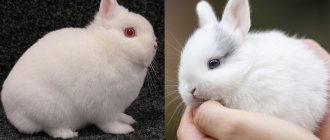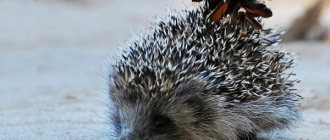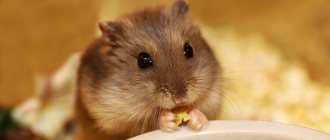Many people who want to have rabbits as pets are often faced with the question of what and how to feed them correctly. A special place is given to this issue when breeding dwarf rabbits. Their delicate digestive system is very sensitive to various fluctuations and reacts very negatively to improper diet.
To ensure that your pet rabbit is always healthy, you should pay a lot of attention to its feeding and read a number of recommendations. If you don’t follow the rules, you can easily lose your family’s furry “friend.”
How to feed a decorative rabbit
Any breed of decorative rabbits is kept on a special diet, including a variety of foods. Long-eared pets should always have food in their feeder: hunger leads to the formation of stagnation in the intestines and to the fermentation of residual food. The incoming food pushes food into the stomach, thereby starting the digestive process.
Attention! Feeding decorative rabbits involves the use of different foods: fresh herbs, fiber, hard and juicy breeds. Solid food is especially important: it allows you to avoid accelerated growth of the small animal’s teeth.
Mineral stones
As mineral stones, you can use pieces of chalk, iodized salt, gypsum, as well as special granules that contain microelements necessary for the normal development of animals. The natural composition allows not only to grind down the incisors, but also strengthens the not particularly strong skeleton of these animals, and also helps improve digestion. Thus, abrasive properties are combined with benefits for the body.
For rabbits this is a welcome treat. To ensure that it is always available, mineral stones can be hung on the bars of the cage.
What to feed decorative rabbits at home
The diet of a decorative rabbit should be varied. You should not offer different types of food at the same time: your pet will choose the most delicious and ignore healthy food. In the morning and evening hours he needs to be given compound feed, in the daytime - vegetables, fruits, herbs, and at night - hay. What types of food are fed to ornamental animals?
Roughage
Rough food (hay, small branches) is introduced into the diet of decorative rabbits with their first teeth. Hay is a low-calorie dish, so it can always be in the animal’s cage. Thanks to hay, rabbits experience:
- grinding of teeth;
- formation of feces;
- removing clumps of hair.
It is important to monitor the quality of hay. The main requirements for it are cleanliness, absence of rot and poisonous plants. It is safer to install a wooden cage in a cage, since a plastic one can injure the animal. You can make hay yourself in the summer, giving preference to the meadow type.
The twigs form the correct growth of teeth and improve digestion. In addition, they have an impressive composition: proteins, fats, amino acids. Not every tree branch is suitable for feeding rabbits. It is better to choose rowan, apple, oak, aspen, acacia, willow, alder, birch: stone fruit trees cause bloating. In winter and autumn, long-eared animals like to feast on pine and juniper branches. On summer days, the branch can be given with fresh leaves.
See also How to give iodine to rabbits for the treatment and prevention of coccidiosis?
Juicy food
The category of succulent food includes all fruits, vegetables and berries, as well as greens. Ideally, succulent food for decorative rabbits is included all year round, but it does not play a primary, but a complementary role to the main food.
Attention! Fruits and vegetables are not served whole, but in small pieces.
It is better to introduce foods one at a time in small portions, while observing changes in your pet’s stool. Diarrhea that appears is a reason to exclude a specific type of food. Fruits and vegetables can be fed to a fluffy puppy from the age of four months. First, they are thoroughly washed and dried. Failure to comply with hygiene rules disrupts the functioning of the gastrointestinal tract. It is recommended to peel fruits and vegetables purchased at the store: they contain many chemicals.
Features of feeding rabbits
Any vegetables and fruits are introduced into the diet of rabbits only at the age of 17-18 days. Carrots and potatoes are the first to be introduced into the diet.
By the age of 2 months, the food of baby rabbits becomes more varied; in addition to mixed feed, they are given carrots, potatoes and apples are slowly added
Before serving, grate the carrots on a fine grater. The potatoes are pre-boiled until tender and chopped with a grater or a knife.
Other products are introduced from 2 months. Potatoes can already be given raw. Its daily requirement for rabbits is 0.05 kg, and boiled is 25 g more.
At the age of 60 days, pets begin to be given beets (the daily norm is from 50 to 75 g). During this period, cabbage leaves are introduced (daily norm 230-250 g). They also begin to feed them with berries. At the age of 3 months, rabbits are considered adults.
What do decorative rabbits eat?
The vegetable list of products is quite diverse. Any rabbit will be happy:
- Cucumbers, previously peeled. They accelerate the lactation process in primiparous females.
- Carrots are the main source of carotene. It can be given from three weeks.
- Zucchini, squash, pumpkin. Their main effect is laxative. They are served only boiled.
- Cabbage. It is better to give the top leaves, previously scalded with boiling water. Cabbage leaves are given in small quantities: excessive consumption leads to bloating and gas formation.
- Beetroot. It is fed with great care: it disrupts the digestion process.
- Boiled potatoes. You should not constantly feed potatoes - the high calorie content of the product leads to rapid weight gain. Your pet won't refuse potato peels. It should be cleaned of dirt and dried.
- Tominamburu (earthen pear), it is given raw.
- Celery mixed with another vegetable.
- Bell pepper, eggplant. They are given in very small portions - 6 mg per day.
The diet of a decorative rabbit is also diluted with fruits. The animals' favorite treat is bananas, which they eat along with the peel. It is still better to peel off the peel: this will protect your pet from the effects of harmful chemical treatments.
See also: Which vitamins are best for rabbits?
Feeding is also carried out:
- Apples, pears, pre-cut into small pieces and peeled and seeds removed.
- Tangerines. The permissible volume is 1 slice every 3-4 days.
- Plums, prunes. These fruits can appear in the eared cat’s diet no more than once every 2 weeks. The high sugar content in them triggers the process of bloating in the intestines.
Fresh herbs
What else do domestic decorative rabbits eat? Fresh grass, herbs from the garden. Thanks to the protein, vitamin complex, and mass of minerals contained in green plants, the long-eared pet's fur becomes thick and shiny, growth is accelerated and reproductive functions are improved in females and males ready for mating. In the absence of the proper volume of greens, a nursing rabbit produces little milk, and small rabbits grow slowly.
Fresh herbs will benefit your pet rabbit. No furry pet will refuse horse sorrel, dandelions, chamomile, timothy, wheatgrass, nettle, lettuce, and spinach. They are washed and dried before serving. Fresh grass is dried under the sun's rays.
Green food for decorative rabbits:
- cereals (green sprouts of oats, winter rye);
- young tops of radishes, carrots, potatoes, beets;
- corn cobs and leaves;
- unhardened sunflower seeds and soft leaves;
- green legumes (peas);
- alfalfa;
- plants (plantain, wormwood, nettle);
- leaves of trees and shrubs (aspen, linden, willow).
Attention! Greens are included in the diet with a gradual increase in portions. Complete training takes about two weeks and allows for a complete replacement of hay.
Grasses and green food
In summer it’s so easy to pamper your pet with green food. Rich in vitamins, minerals and proteins, it improves the condition of rabbit fur and has a positive effect on the reproductive function of individuals and their growth. It is not recommended to give the same type of grass; it is better to alternate different greens.
Let's talk in detail about what green food rabbits eat. You can offer animals both cultivated and wild plants.
Main types of green feed
- Ushastiki enjoy eating garden herbs: parsley, celery, mint, lettuce, basil.
- Herbs: clover, alfalfa (in limited quantities), plantain, dandelion, wormwood and others.
- Fresh tops of potatoes, carrots, beets, radishes.
- Leaves of bushes and trees.
- Corn – greens and cobs.
You need to collect grass away from the roadway and industrial area; it is advisable to do this in the countryside, in a country house or in a park.
It is very important to avoid poisonous herbs that can cause the death of the animal. These include celandine, henbane, buttercup, spurge, hemlock and others. Eared cats should not have access to indoor houseplants that may be dangerous to them.
Pets should prepare hay for the winter. This must be done efficiently and ensure that the preparations do not accidentally contain poisonous plants.
What to feed a decorative rabbit: factory or natural food
The ideal diet for a pet includes exclusively natural products. However, some life situations (moving, traveling) force owners to resort to dry concentrates and canned food. Under no circumstances should granulated food constitute the animal’s permanent menu because:
- The animal's body has difficulty digesting the granular structure of food.
- It contains little plant fiber, which ensures the digestion process.
- It leads to rapid weight gain.
- A high content of mineral impurities leads to the formation of kidney stones.
- Small soft granules are not suitable for grinding teeth.
- The dry granule swells in the stomach, increases twice or three times in size and stretches, damaging the gastric mucosa.
See also: What herbs can be given to rabbits and which ones can’t?
If there is a need to temporarily switch your pet to granulated food, then your choice should be a quality product. Rich carbohydrate, protein, vitamin, mineral composition, as well as fiber and raw ash content are the main criteria for choosing a product. When feeding this way, it is equally important to follow all the instructions on the food package.
The transition from artificial nutrition to natural nutrition is carried out gradually, stretching over 1-2 weeks. They begin to introduce hay and vegetables into the animal’s diet in small portions, replacing dry concentrate.
Precautionary measures
Before introducing new products, you should familiarize yourself with basic precautions to avoid unpleasant consequences:
- It is strictly forbidden to introduce vegetables and fruits into the diet of long-eared animals if the individuals have not reached 4 months of age;
- it is important to mix foods together so that pets do not get used to a monotonous menu;
- to save the animals’ energy, all components of the menu must be cut into small pieces, then the rabbits will have to spend less energy on chewing;
- All products must be washed thoroughly, wiped dry with paper napkins or towels and only then given to pets.
What vegetables and fruits to feed rabbits: video
What not to feed a decorative rabbit
Knowing what you can give to a decorative rabbit, it is important not to lose sight of food that is strictly prohibited. An improper diet can lead to health problems and death of your pet.
When creating the Ushastika menu, you should refuse:
refined and bulk sugar, chocolate and caramel sweets;
- boiled vegetables;
- fried products;
- canned vegetables, fruits;
- dairy products;
- crackers, wheat, rye bread;
- cookies, muesli.
Carrot
This vegetable is suitable for feeding rabbits. It is rich in carotene, vitamins C, B, and natural sugars.
Carrot complementary foods can be introduced from the age of 2–3 months. Although the animals love vegetables, they cannot eat much. With an excess of the product, the risk of bloating of the stomach or intestines and other digestive disorders increases.
The animals are given fresh carrots (forage and table varieties), mixed with other silage components, and also pickled or fermented. For the winter, you can pickle root vegetables; to do this, wash them, put them in a barrel, fill them with a water-salt solution (4–5%), and cover them with a lid. In this form, the product can be stored for a whole year.
Carrots are usually given to rabbits as part of mash. Before this, the fruit is peeled, cut into cubes and mixed with other ingredients.
It is recommended to feed carrot tops to rabbits who have recently been ill. It is given dried or dried. It is recommended to combine tops with fresh carrots as part of various feeds.
How many times a day should you feed a decorative rabbit?
Small (under three months of age) rabbits are given feed in unlimited quantities. However, if there are obvious signs of overeating and the animal is constantly near the bowl, the mixed feed ration is limited to twice feeding 1-2 tbsp. l. Hay should always be in the feeder: it is low in calories and effectively grinds the teeth.
It is recommended to feed adult decorative rabbits 2 times a day at the same hours. Compliance with the diet is necessary, since by the allotted time the pet’s gastric juice begins to actively secrete.
A nursing rabbit is fed frequently - 3-4 times a day, and it is also necessary to adhere to the hourly schedule. The diet includes a large amount of succulent feed, the uneaten remains of which are removed every day.
When feeding decorative rabbits at home, preference is given to natural food rather than factory-made pellets. The latter lead to digestive problems, are bad for teeth and cannot provide the animal with all the necessary elements and vitamins, fiber and protein. The pet's menu should consist of rough and succulent food, fresh herbs.
Special treats for grinding teeth
In nature, rodents consume a lot of roughage: branches, dry stems of coarse grasses. Their teeth wear down naturally. When feeding a dwarf rabbit with compound feed, the animal's teeth may not experience the proper load. This leads to overgrowth of teeth, which is why the animal cannot consume food normally.
They buy special sticks for the pet, which rabbits gnaw with great eagerness. You can cut branches of willow, apple, currant, pear, oak, hazel, and aspen yourself. The chocks are placed in the cage along with the bark; they should be 1–3 cm thick.
Diseases due to malnutrition
In winter, rabbits are exposed to harsher conditions, so their health is exposed to additional risks. Weak digestion and switching to harder food can provoke dangerous diseases.
It is important to monitor the animal's appetite. It depends not only on the quality and quantity of food
Rabbits, whether by wanting to eat or refusing to eat, react to many changes in their lives. It is important to constantly monitor any changes in your rabbits' appetite. They can be a timely warning.
Reasons for rabbits refusing food:
- unsuitability of feed for consumption;
- sudden change in diet;
- animal disease;
- unfavorable conditions in the cage - dirt, stuffiness, drafts;
- a new, unusual habitat after transplantation.
Violation of the diet and insufficient quality of nutrition lead to weakening of the rabbit’s body. Weak immunity cannot withstand harsh winter conditions. As a result, rabbits catch colds and develop conjunctivitis.
A common problem when keeping rabbits in winter is indigestion. A weak stomach and intestines are highly sensitive to any changes.
Poor quality food, sudden changes in diet, feeding unhealthy foods, neglect of hygiene products - all this can cause bloating, diarrhea or upset.
Stomach problems in rabbits are difficult to resolve. In winter, digestive difficulties also weaken the immune system, which increases the likelihood of developing colds, viral or infectious diseases.
The quality of food in winter is of utmost importance. This component should be given great importance.
